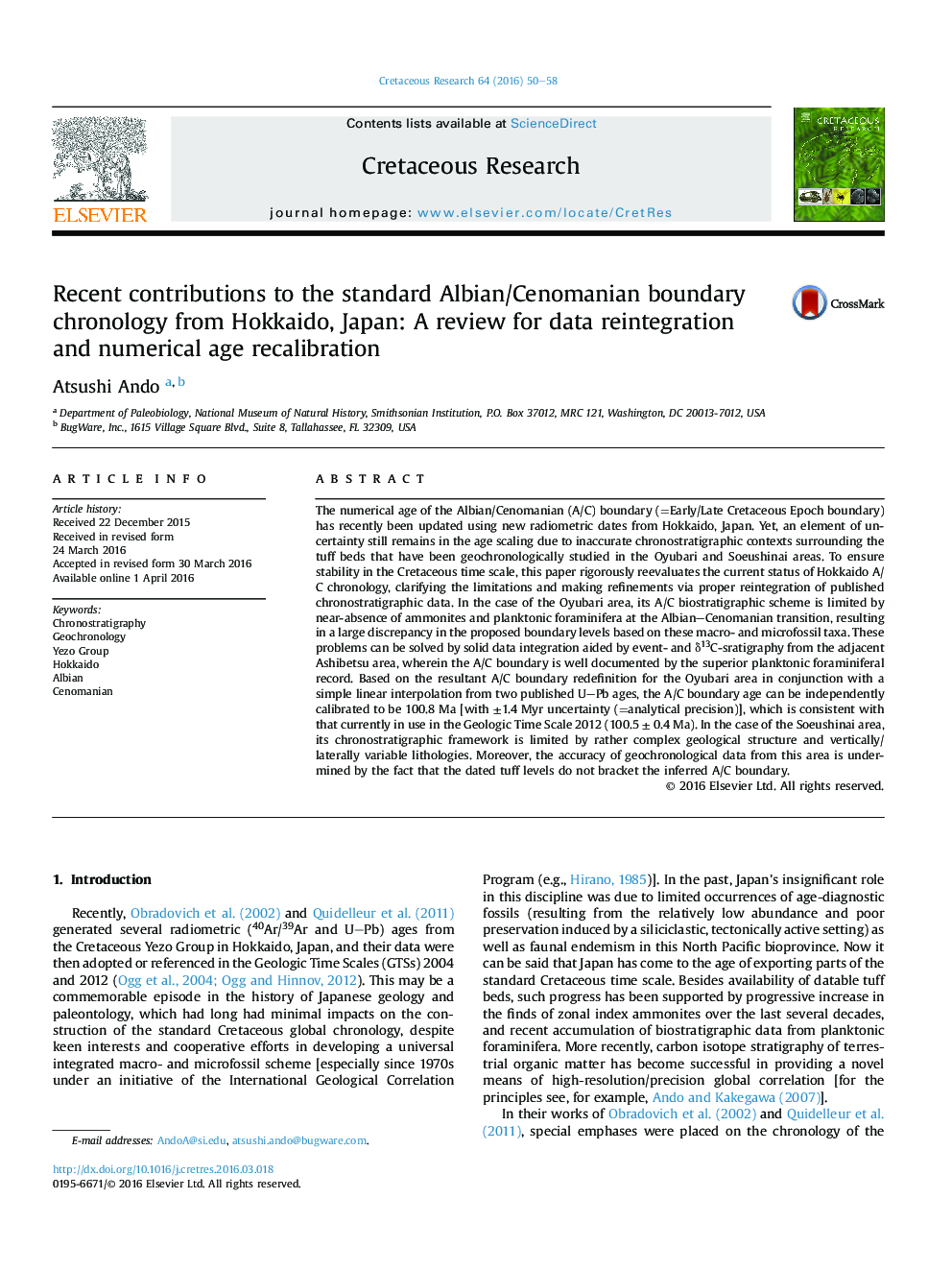| Article ID | Journal | Published Year | Pages | File Type |
|---|---|---|---|---|
| 4746882 | Cretaceous Research | 2016 | 9 Pages |
•Published data for Albian/Cenomanian boundary chronology from Japan are reviewed.•Recent A/C foraminiferal and δ13C data from Ashibetsu area compare well with those of GSSP.•Above A/C criteria can be imported into N. Oyubari area using event- and δ13C-stratigraphy.•With redefined A/C boundary and UPb dates, N. Oyubari area can serve as global standard.•Independent new A/C boundary recalibration at 100.8 Ma adds stability in GTS 2012.
The numerical age of the Albian/Cenomanian (A/C) boundary (=Early/Late Cretaceous Epoch boundary) has recently been updated using new radiometric dates from Hokkaido, Japan. Yet, an element of uncertainty still remains in the age scaling due to inaccurate chronostratigraphic contexts surrounding the tuff beds that have been geochronologically studied in the Oyubari and Soeushinai areas. To ensure stability in the Cretaceous time scale, this paper rigorously reevaluates the current status of Hokkaido A/C chronology, clarifying the limitations and making refinements via proper reintegration of published chronostratigraphic data. In the case of the Oyubari area, its A/C biostratigraphic scheme is limited by near-absence of ammonites and planktonic foraminifera at the Albian–Cenomanian transition, resulting in a large discrepancy in the proposed boundary levels based on these macro- and microfossil taxa. These problems can be solved by solid data integration aided by event- and δ13C-sratigraphy from the adjacent Ashibetsu area, wherein the A/C boundary is well documented by the superior planktonic foraminiferal record. Based on the resultant A/C boundary redefinition for the Oyubari area in conjunction with a simple linear interpolation from two published UPb ages, the A/C boundary age can be independently calibrated to be 100.8 Ma [with ±1.4 Myr uncertainty (=analytical precision)], which is consistent with that currently in use in the Geologic Time Scale 2012 (100.5 ± 0.4 Ma). In the case of the Soeushinai area, its chronostratigraphic framework is limited by rather complex geological structure and vertically/laterally variable lithologies. Moreover, the accuracy of geochronological data from this area is undermined by the fact that the dated tuff levels do not bracket the inferred A/C boundary.
